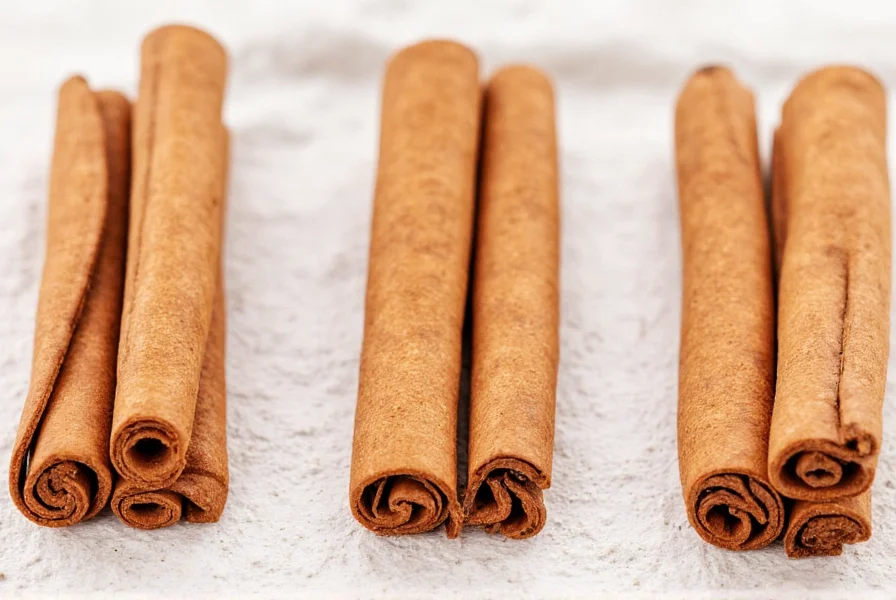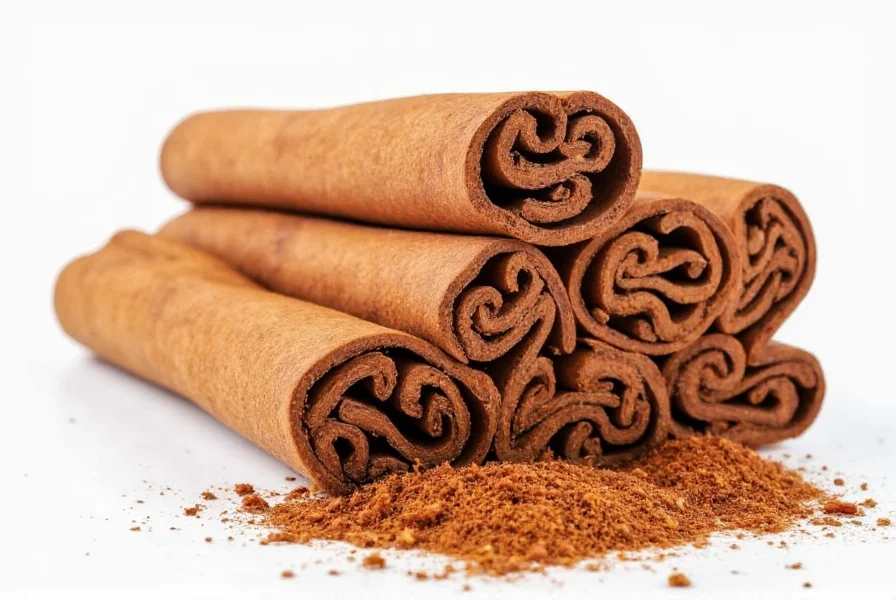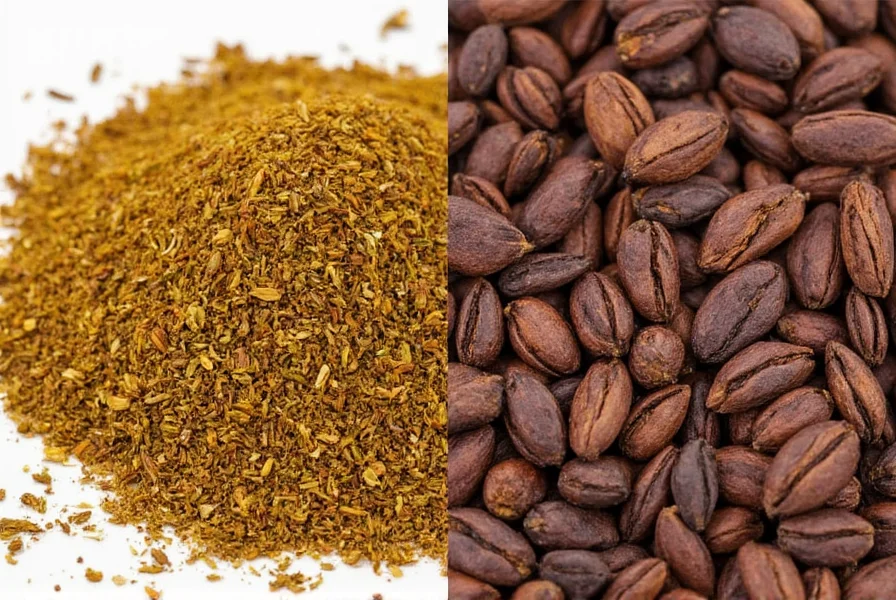Introduction: The Health-Critical Difference Between Ceylon and Cassia Cinnamon
If you've ever wondered which cinnamon is safe for regular use, the answer starts with coumarin. Cassia cinnamon contains high levels of this compound, which can cause liver damage over time, while Ceylon cinnamon has negligible amounts. This guide explains the critical differences between the two types to help you make informed, health-conscious choices in your kitchen.

Health Risks and Safety: Why Coumarin Matters
While both cinnamon types offer health benefits, Cassia cinnamon's high coumarin content poses serious risks. The European Food Safety Authority (EFSA) recommends a maximum daily intake of 0.1 mg of coumarin per kilogram of body weight. For a 70kg adult, that's about 7mg per day. Just 1 teaspoon (2.5g) of Cassia cinnamon can contain 5-12mg of coumarin—exceeding safe limits. Regular consumption can lead to liver damage, especially in sensitive individuals.
Ceylon cinnamon, however, contains less than 0.04% coumarin, making it safe for daily use without risk. This critical difference is why health experts recommend Ceylon for regular consumption, especially for those with liver conditions or taking medications metabolized by the liver.

What is Ceylon Cinnamon?
Ceylon cinnamon, often called "true cinnamon," hails from Sri Lanka and parts of southern India. It's made from the inner bark of the Cinnamomum verum tree and has a delicate, sweet flavor profile.

- Appearance: Thin, papery layers that look like a cigar roll
- Flavor: Subtle, citrusy, and floral
- Coumarin Content: Negligible (less than 0.04%)
- Price: Higher due to labor-intensive harvesting
Because it's milder and more complex, chefs and bakers often prefer it when subtlety is key — think custard-based desserts or delicate chai blends.
What is Cassia Cinnamon?
Cassia cinnamon comes mainly from China and Indonesia. Known as "false cinnamon," it's made from the bark of Cinnamomum cassia trees and has a bold, spicy flavor.

- Appearance: Thick, rough bark with a darker color
- Flavor: Strong, pungent, and slightly bitter
- Coumarin Content: High (5-12mg per teaspoon)
- Price: More affordable and widely available
If you're baking snickerdoodle cookies or making pumpkin spice lattes, this is the one you want — it can stand up to strong flavors and sugar without fading into the background.
| Feature | Ceylon Cinnamon | Cassia Cinnamon |
|---|---|---|
| Origin | Sri Lanka, Southern India | China, Indonesia |
| Bark Thickness | Thin and multi-layered | Thick and hard |
| Color | Light brown with tan undertones | Dark reddish-brown |
| Taste | Mild, sweet, and nuanced | Strong, spicy, and intense |
| Coumarin Content | Very low (less than 0.04%) | High (5-12mg per teaspoon) |
| Price | Higher | Lower |
Culinary Uses: Where Each Shines
The secret to great cooking lies in using the right ingredients. Here's where each cinnamon shines best:
Best Recipes for Ceylon Cinnamon
- Custard Pies: Its subtle flavor complements creamy bases beautifully.
- Chai Tea: Enhances other spices like cardamom and clove without overpowering them.
- Rice Puddings: Adds warmth without dominating the dish.
Best Recipes for Cassia Cinnamon
- Oatmeal: Pairs well with brown sugar and apples for a hearty breakfast.
- Cookies & Baked Goods: Stands up to sugar and flour, perfect for snickerdoodles and apple pies.
- Spiced Drinks: Ideal for mulled wine, hot chocolate, and coffee infusions.
Buying Guide: How to Choose the Right Cinnamon
Now that you know the difference, let's talk shopping. Use this simple guide to pick the perfect cinnamon for your needs:
For Everyday Cooking and Baking
- Recommended: Cassia Cinnamon
- Why: Affordable, bold flavor, and readily available.
- Product Tip: Look for whole sticks or freshly ground versions for better quality control.
For Delicate Desserts and Beverages
- Recommended: Ceylon Cinnamon
- Why: Superior taste and aroma with less risk of bitterness or toxicity.
- Product Tip: Buy from reputable brands that clearly label it as "Ceylon" — not just "cinnamon."
Top Picks for Home Chefs
- Nature's Way Organic Ceylon Cinnamon: Perfect for health-focused cooks and dessert lovers.
- Simply Organic Cassia Cinnamon: Great value with robust flavor for daily use.
- Fresh Origins Ground Ceylon: Ideal for those who love fresh spices and clean ingredient lists.
Frequently Asked Questions
Is Cassia cinnamon dangerous to consume?
Cassia contains coumarin, which can be harmful to the liver in large quantities. The European Food Safety Authority recommends a maximum daily intake of 0.1 mg of coumarin per kilogram of body weight. For most adults, this means limiting Cassia to about 1 teaspoon (2.5 grams) per day. Ceylon cinnamon contains negligible coumarin and is safer for regular consumption.
How can I tell if my cinnamon is Ceylon or Cassia?
Check the appearance: Ceylon cinnamon has thin, layered sticks that look like cigar paper rolls and is light tan in color. Cassia has thick, hard single-layer sticks with a dark reddish-brown color. If your "cinnamon" is very cheap and intensely spicy, it's likely Cassia - most supermarket cinnamon is Cassia.
Can I substitute Ceylon for Cassia in recipes?
Yes, but with adjustments. Ceylon has a milder flavor, so you may need to use 1.5-2 times more to achieve similar intensity. For delicate dishes like custards or light desserts, Ceylon works perfectly as a 1:1 substitute. For bold recipes like chocolate or spice cakes, you might want to increase the amount slightly. Never substitute Cassia for Ceylon in recipes specifically calling for "true cinnamon" as the flavor profile differs significantly.
Why is Ceylon cinnamon more expensive than Cassia?
Ceylon cinnamon is more labor-intensive to produce. The inner bark is carefully scraped and rolled by hand into delicate multi-layered sticks. Cassia bark naturally curls into thick single-layer sticks during drying, requiring less processing. Additionally, Ceylon comes primarily from Sri Lanka with limited growing regions, while Cassia is widely cultivated in China and Indonesia with higher yields.
Where can I find authentic Ceylon cinnamon?
Look for products that specifically say "Ceylon cinnamon" or "Cinnamomum verum" on the label. Reputable spice companies like Spice Jungle, Simply Organic, and Frontier Co-op offer verified Ceylon varieties. Specialty stores focusing on Sri Lankan products or high-end gourmet markets often carry it. Avoid products labeled simply as "cinnamon" which are typically Cassia.
How should I store cinnamon to maintain freshness?
Store both types in airtight containers away from light and heat. Ground cinnamon lasts about 6-12 months, while cinnamon sticks maintain potency for 2-3 years. For maximum flavor, buy whole sticks and grind as needed. Ceylon's delicate oils evaporate faster than Cassia's, so proper storage is especially important for preserving its nuanced flavor.
Conclusion: Spice Up Your Life Safely and Deliciously
Whether you're sprinkling cinnamon on your morning toast or grinding your own sticks for holiday cookies, knowing the difference between Ceylon and Cassia empowers you to cook smarter — and taste better without risking your health.
So next time you reach for that cinnamon jar, pause for a second. Ask yourself: am I going for subtlety or strength? Health or heartiness? Once you know, the choice becomes clear — and deliciously satisfying.










 浙公网安备
33010002000092号
浙公网安备
33010002000092号 浙B2-20120091-4
浙B2-20120091-4